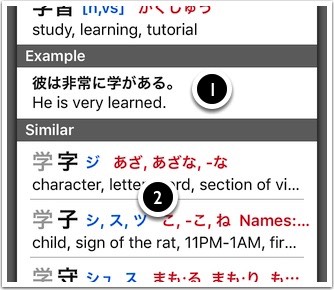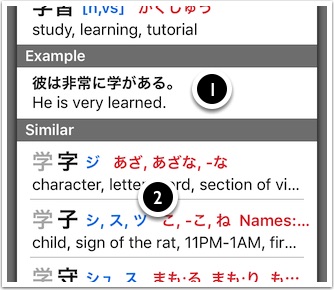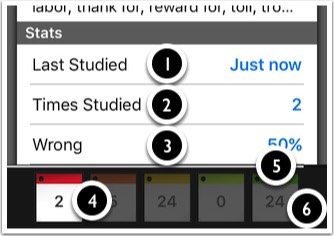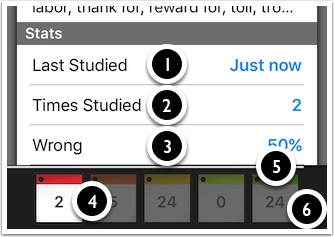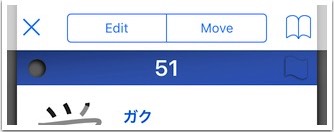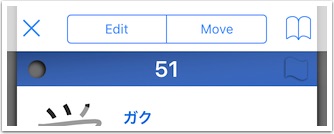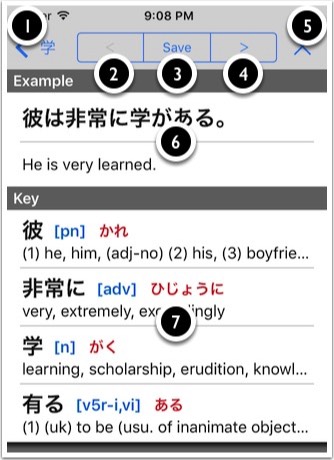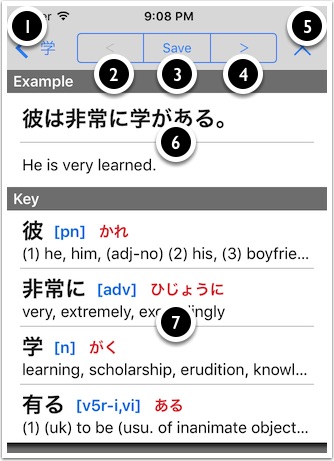User Guide
Details View
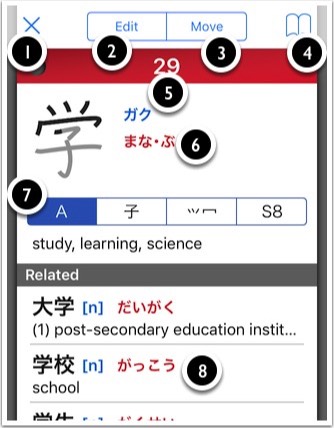
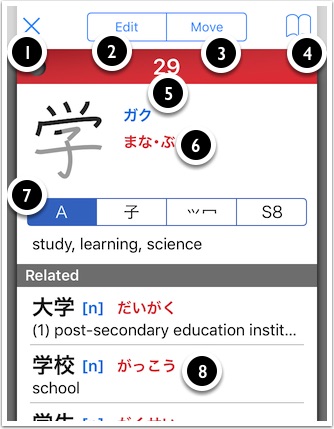
► Swipe left or right to view other stickies in deck.
► If a word is being displayed, an audio button will also appear.
► Around 8200 audio samples spoken by a native speaker are built in.
► Kanij don’t have audio.
► A looping miniature animation (shown) can be toggled in settings.
► External keyboard options: left/right keys (backwards/forwards), space (flag), a (audio) and 1-5 (change colour).
① Back.
② Edit sticky view (which also has a delete button).
③ Move this sticky to another deck (shows a deck list).
④ Open the dictionary.
⑤ Current position in deck. Tap here to flag.
⑥ Tap to show the writing trainer (pen mode).
⑦ Switch between answer, radical, particle and reference view (kanji bar).
⑧ Compounds that use the kanji (if it’s a kanji) or a break down of each kanji used (if it’s a word).
Audio will not automatically play during study unless you specifically set it to do so in settings.
► If a word is being displayed, an audio button will also appear.
► Around 8200 audio samples spoken by a native speaker are built in.
► Kanij don’t have audio.
► A looping miniature animation (shown) can be toggled in settings.
► External keyboard options: left/right keys (backwards/forwards), space (flag), a (audio) and 1-5 (change colour).
① Back.
② Edit sticky view (which also has a delete button).
③ Move this sticky to another deck (shows a deck list).
④ Open the dictionary.
⑤ Current position in deck. Tap here to flag.
⑥ Tap to show the writing trainer (pen mode).
⑦ Switch between answer, radical, particle and reference view (kanji bar).
⑧ Compounds that use the kanji (if it’s a kanji) or a break down of each kanji used (if it’s a word).
Audio will not automatically play during study unless you specifically set it to do so in settings.
Kanji Bar
► Appears when the question is a kanji.
► Detailed information about that kanji (Answer, radical, particles and codes).
► SKIP codes can be (and often are) associated with more than one kanji.
► A small grey arrow to the right indicates more kanji, based on the shown information, can be searched.
► Some kanji can indeed make you want to go to a Kanji Bar.
► Detailed information about that kanji (Answer, radical, particles and codes).
► SKIP codes can be (and often are) associated with more than one kanji.
► A small grey arrow to the right indicates more kanji, based on the shown information, can be searched.
► Some kanji can indeed make you want to go to a Kanji Bar.
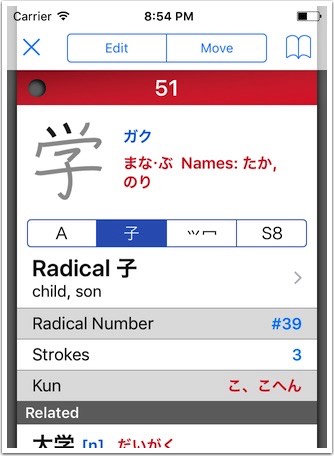
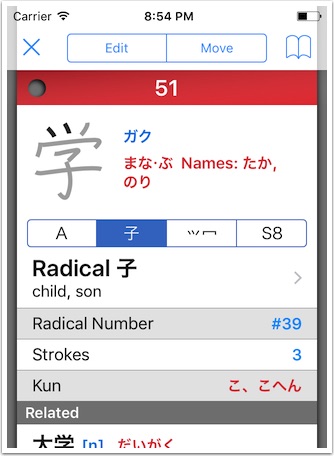
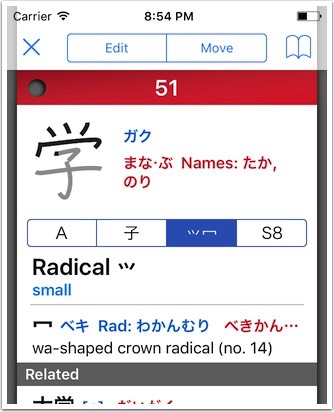
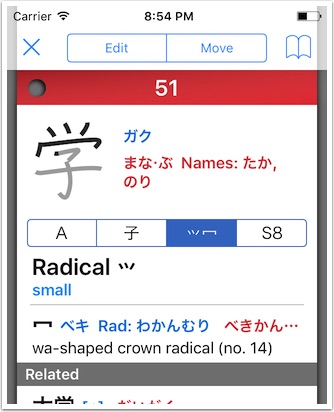
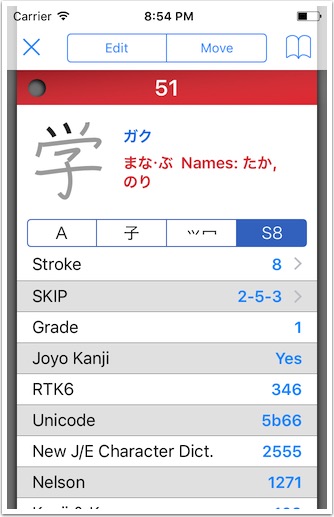
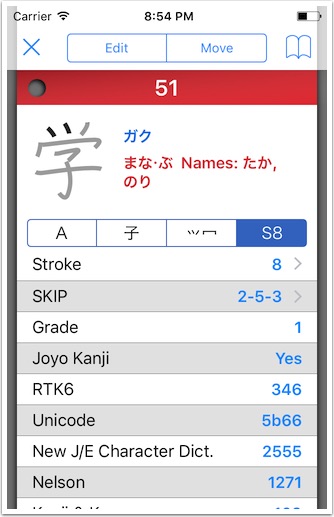
► Radicals were originally conceived as a way of searching large paper (radical indexed) dictionaries. They don't, as is often believed, always convey the core meaning of the kanji (no matter how hard you try). Although the radicals for most kanji are universally agreed, some difficult (i.e. outside joyo) kanji have more than one accepted radical depending on which dictionary you use.
► Particles are a visual guide to memorisation and cannot always be relied upon to convey meaning. Also known as elements, components or parts. Unlike radicals, there is no universally agreed list; different resources use different breakdowns and as such should be treated as a visual guide only. As a rule of thumb, the less there are, the more likely their meanings will fit with the main answer.
